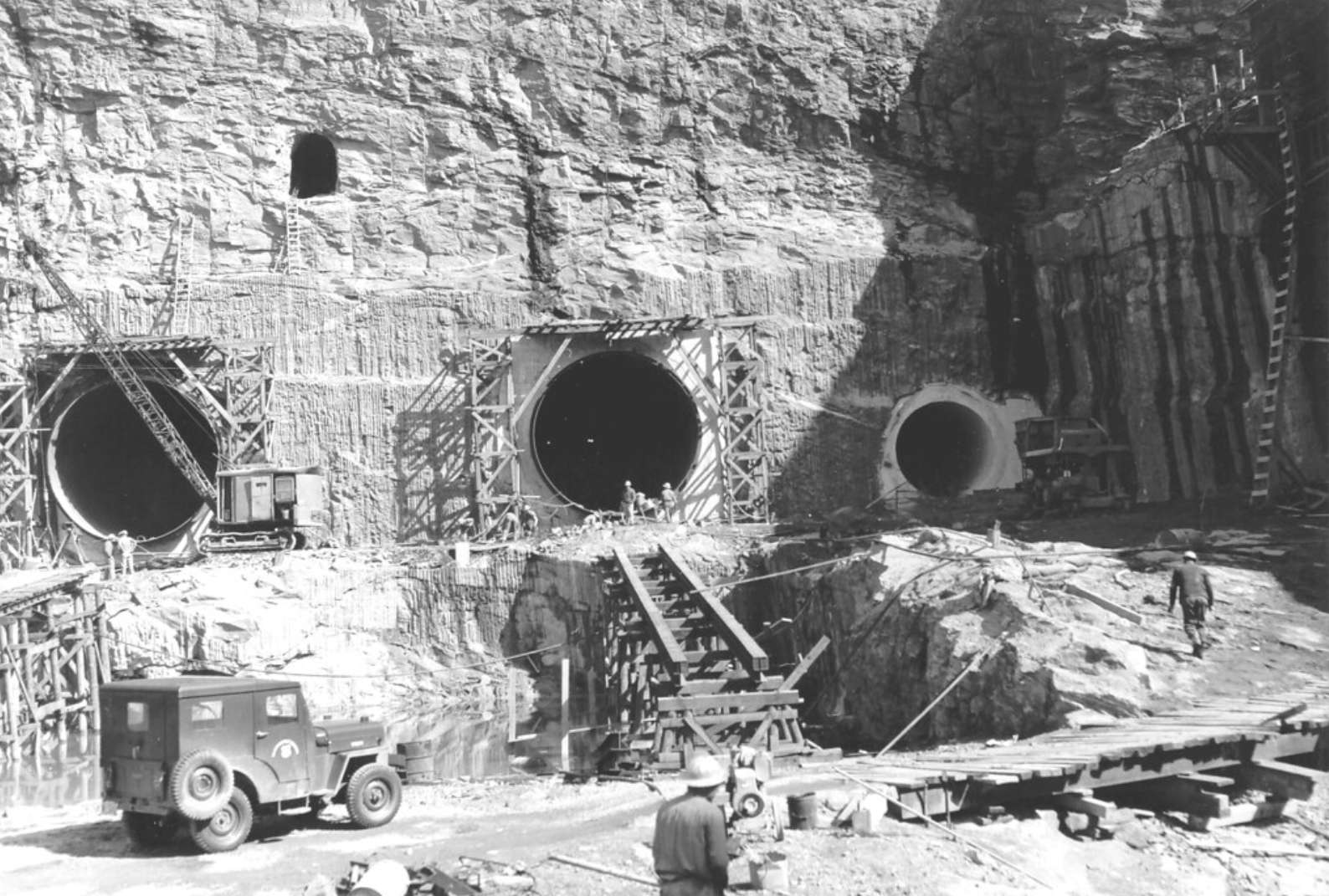Lake Sydney Lanier is a man-made lake that provides drinking water, hydroelectricity and recreation opportunities to residents in nearby cities like Sugar Hill, Gwinnett County and the rest of metro-Atlanta.
After years of careful planning and strategic property acquisition beginning in 1948 by the federal government, Lake Lanier was officially created in 1957 with the completion of Buford Dam by the Corps of Engineers. Construction of Buford Dam was a massive undertaking, and it took seven years to complete after the official groundbreaking ceremony on March 1, 1950. Nearly 5,000 spectators turned out to hear speeches from individuals like Mayor William Hartsfield and Governor Eugene Talmadge.
Completion of Buford Dam and Lake Lanier was a significant accomplishment. The project created good paying, but dangerous, jobs for thousands of men. One of these men was a resident of Sugar Hill, Johnnie Callahan, who tragically lost his life in the service of his fellow man. Today, he is remembered as a hero by his family and the community where he is laid to rest.
By 1954, much of the earthen foundation of Buford Dam had been completed. More than 3.7 million cubic yards of earth and rock were used to build the dam. The first focus of construction was to complete the three saddle dike dams, which were constructed to bridge several hilltops. These smaller saddle dike dams were designed to help contain the water that would eventually fill Lake Lanier. The last saddle dike dam to be built was in Gwinnett County, and the first two were in Forsyth County. Bridging two additional hilltops across the Chattahoochee River, the main dam was constructed next. A new channel was then cut to redirect the flow of water from the original channel to the powerhouse. One of the major projects underway in early 1954 was happening in the forebay area of the main dam, where tunnels were being drilled to later house the water intake structures and turbines. Despite frequent checks for loose rocks on the steep granite face on the upstream or Lake Lanier side of Buford, it was dangerous work.
Johnnie Callahan was employed by J.A. Jones Construction Company of Charlotte, North Carolina, and, by 1954, had lived in Sugar Hill for almost two years. He was a family man and the father of four girls and two boys. Johnnie, no doubt, would have appreciated the work even though it was dangerous. He would have felt the same pride of accomplishment as the other workers. They were all contributing toward the construction of an impressive and important structure that would benefit the surrounding community and all of Georgia.

History does not tell us everything that happened on March 16, 1954, but an article from the Atlanta Constitution on the following day provides us with some details regarding the tragic death of Johnnie Callahan. He was one of two individuals injured by falling rocks from a landslide. Leman Stone of Buford would survive with just a broken ankle, but Johnnie, despite wearing a hardhat, would later pass away from head injuries at Cumming Hospital. Both were working at the base of a forebay cut on the Forsyth County side of Buford Dam, where an intake tunnel was being cut into the granite. The article reads, “… the rockslide presumably was caused by vibrations from the lowering of a bucket of concrete down the sheer side of the cut or a loosening of rocks as a result of change in weather conditions.” Some of the rocks, according to the Corps of Engineers, may have weighed as much as 20 pounds.
Johnnie Callahan’s death was tragic. Johnnie risked his life to earn a living for his family, and he risked his life to help build Buford Dam. He was a hero. Generations of his family will benefit from his contributions as a husband and father, and generations of Georgians will reap the benefits of Buford Dam.
— Brandon Hembree




